在上一节中,我带大家学习了在Spring Boot中对缓存的实现方案,尤其是结合Spring Cache的注解的实现方案,接下来在本章节中,我带大家通过代码来实现。
一. Spring Boot实现默认缓存
1. 创建web项目
我们按照之前的经验,创建一个web程序,并将之改造成Spring Boot项目,具体过程略。

2. 添加依赖包
<dependency>
<groupId>org.springframework.boot</groupId>
<artifactId>spring-boot-starter-data-jpa</artifactId>
</dependency>
<dependency>
<groupId>mysql</groupId>
<artifactId>mysql-connector-java</artifactId>
</dependency>
<dependency>
<groupId>org.springframework.boot</groupId>
<artifactId>spring-boot-starter-cache</artifactId>
</dependency>3. 创建application.yml配置文件
server:
port: 8080
spring:
application:
name: cache-demo
datasource:
driver-class-name: com.mysql.cj.jdbc.Driver
username: root
password: syc
url: jdbc:mysql://localhost:3306/spring-security?useUnicode=true&characterEncoding=utf8&characterSetResults=utf8&useSSL=false&serverTimezone=UTC
#cache:
#type: generic #由redis进行缓存,一共有10种缓存方案
jpa:
database: mysql
show-sql: true #开发阶段,打印要执行的sql语句.
hibernate:
ddl-auto: update4. 创建一个缓存配置类
主要是在该类上添加@EnableCaching注解,开启缓存功能。
package com.yyg.boot.config;
import org.springframework.cache.annotation.EnableCaching;
/**
* @Author 一一哥Sun
* @Date Created in 2020/4/14
* @Description Description
* EnableCaching启用缓存
*/
@Configuration
@EnableCaching
public class CacheConfig {
}5. 创建User实体类
package com.yyg.boot.domain;
import lombok.Data;
import lombok.ToString;
import javax.persistence.*;
import java.io.Serializable;
@Entity
@Table(name="user")
@Data
@ToString
public class User implements Serializable {
//IllegalArgumentException: DefaultSerializer requires a Serializable payload
// but received an object of type [com.syc.redis.domain.User]
@Id
@GeneratedValue(strategy = GenerationType.AUTO)
private Long id;
@Column
private String username;
@Column
private String password;
}6. 创建User仓库类
package com.yyg.boot.repository;
import com.yyg.boot.domain.User;
import org.springframework.data.jpa.repository.JpaRepository;
public interface UserRepository extends JpaRepository<User,Long> {
}7. 创建Service服务类
定义UserService接口
package com.yyg.boot.service;
import com.yyg.boot.domain.User;
public interface UserService {
User findById(Long id);
User save(User user);
void deleteById(Long id);
}实现UserServiceImpl类
package com.yyg.boot.service.impl;
import com.yyg.boot.domain.User;
import com.yyg.boot.repository.UserRepository;
import com.yyg.boot.service.UserService;
import org.springframework.beans.factory.annotation.Autowired;
import org.springframework.cache.annotation.CacheEvict;
import org.springframework.cache.annotation.CachePut;
import org.springframework.cache.annotation.Cacheable;
import org.springframework.stereotype.Service;
@Service
public class UserServiceImpl implements UserService {
@Autowired
private UserRepository userRepository;
//普通的缓存+数据库查询代码实现逻辑:
//User user=RedisUtil.get(key);
// if(user==null){
// user=userDao.findById(id);
// //redis的key="product_item_"+id
// RedisUtil.set(key,user);
// }
// return user;
/**
* 注解@Cacheable:查询的时候才使用该注解!
* 注意:在Cacheable注解中支持EL表达式
* redis缓存的key=user_1/2/3....
* redis的缓存雪崩,缓存穿透,缓存预热,缓存更新...
* condition = "#result ne null",条件表达式,当满足某个条件的时候才进行缓存
* unless = "#result eq null":当user对象为空的时候,不进行缓存
*/
@Cacheable(value = "user", key = "#id", unless = "#result eq null")
@Override
public User findById(Long id) {
return userRepository.findById(id).orElse(null);
}
/**
* 注解@CachePut:一般用在添加和修改方法中
* 既往数据库中添加一个新的对象,于此同时也往redis缓存中添加一个对应的缓存.
* 这样可以达到缓存预热的目的.
*/
@CachePut(value = "user", key = "#result.id", unless = "#result eq null")
@Override
public User save(User user) {
return userRepository.save(user);
}
/**
* CacheEvict:一般用在删除方法中
*/
@CacheEvict(value = "user", key = "#id")
@Override
public void deleteById(Long id) {
userRepository.deleteById(id);
}
}8. 创建Controller接口方法
package com.yyg.boot.web;
import com.yyg.boot.domain.User;
import com.yyg.boot.service.UserService;
import lombok.extern.slf4j.Slf4j;
import org.springframework.beans.factory.annotation.Autowired;
import org.springframework.http.HttpStatus;
import org.springframework.http.ResponseEntity;
import org.springframework.web.bind.annotation.*;
@RestController
@RequestMapping("/user")
@Slf4j
public class UserController {
@Autowired
private UserService userService;
@PostMapping
public User saveUser(@RequestBody User user) {
return userService.save(user);
}
@GetMapping("/{id}")
public ResponseEntity<User> getUserById(@PathVariable("id") Long id) {
User user = userService.findById(id);
log.warn("user="+user.hashCode());
HttpStatus status = user == null ? HttpStatus.NOT_FOUND : HttpStatus.OK;
return new ResponseEntity<>(user, status);
}
@DeleteMapping("/{id}")
public String removeUser(@PathVariable("id") Long id) {
userService.deleteById(id);
return "ok";
}
}9. 创建入口类
package com.yyg.boot;
import org.springframework.boot.SpringApplication;
import org.springframework.boot.autoconfigure.SpringBootApplication;
@SpringBootApplication
public class CacheApplication {
public static void main(String[] args) {
SpringApplication.run(CacheApplication.class, args);
}
}10. 完整项目结构
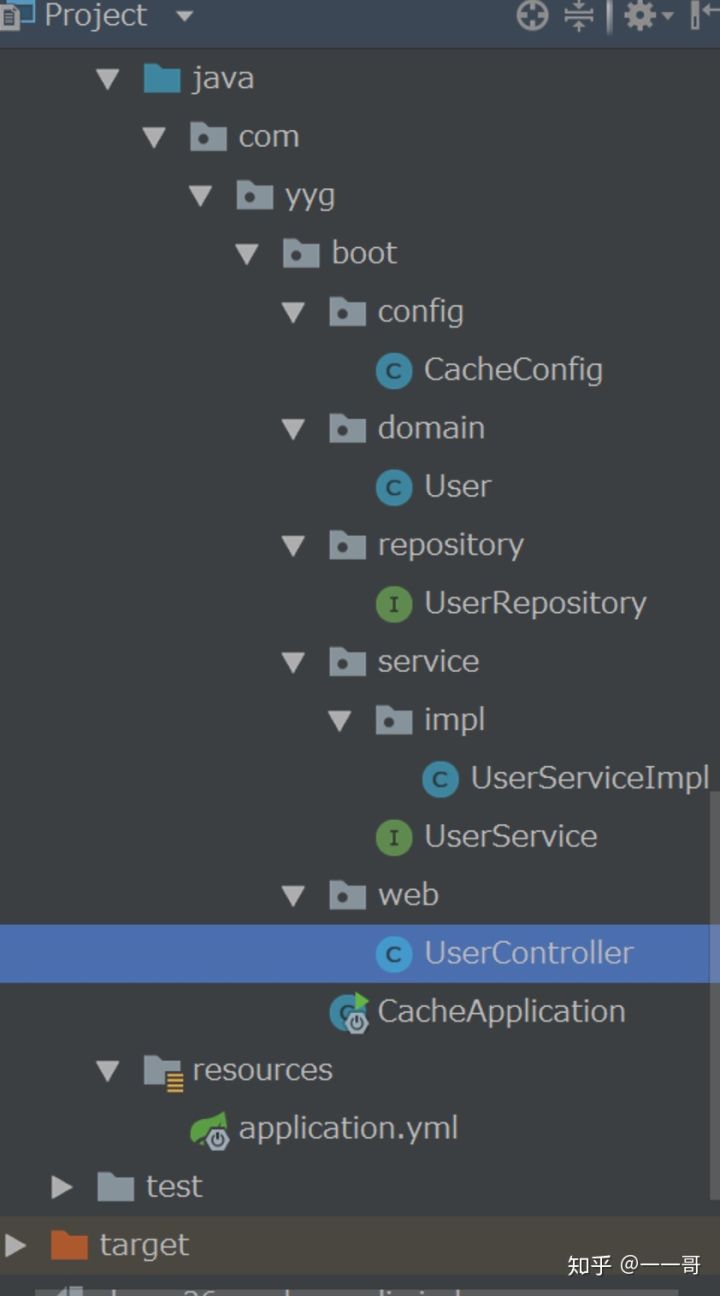
11. 启动项目进行测试
我们首先调用添加接口,往数据库中添加一条数据。
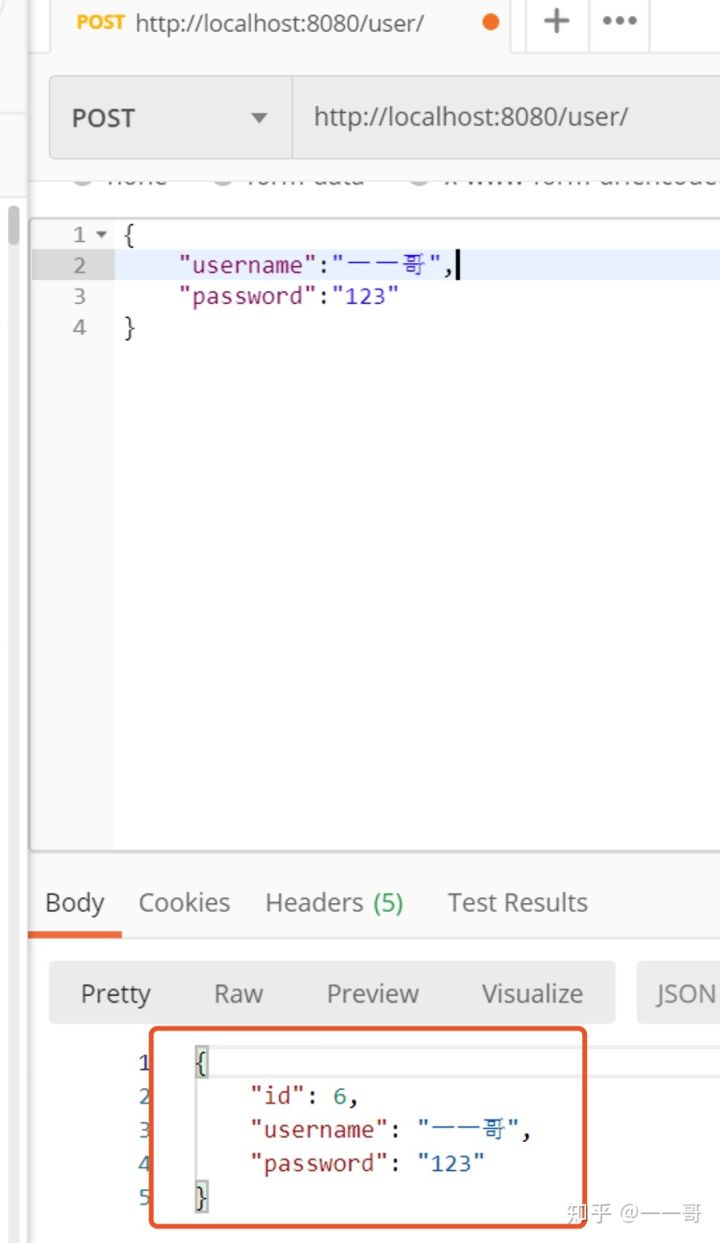
可以看到数据库中,已经成功的添加了一条数据。
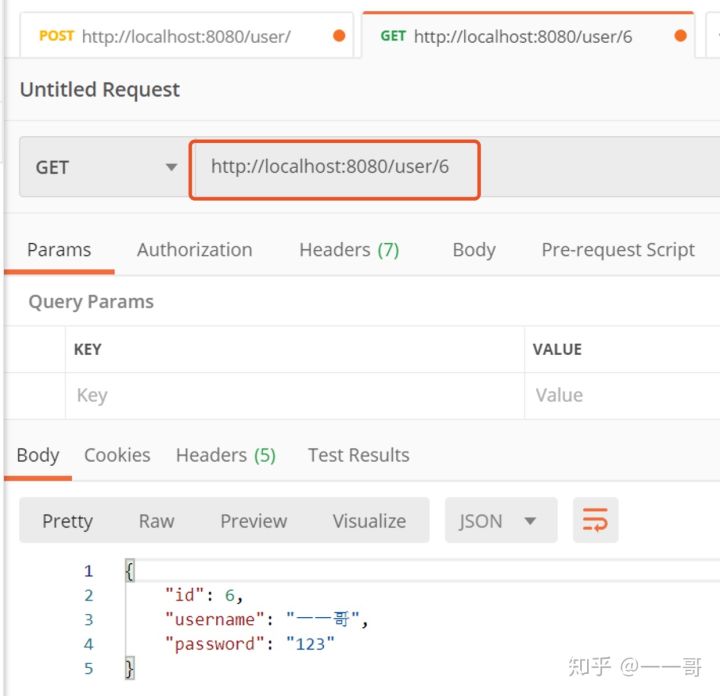
然后测试一下查询接口方法。
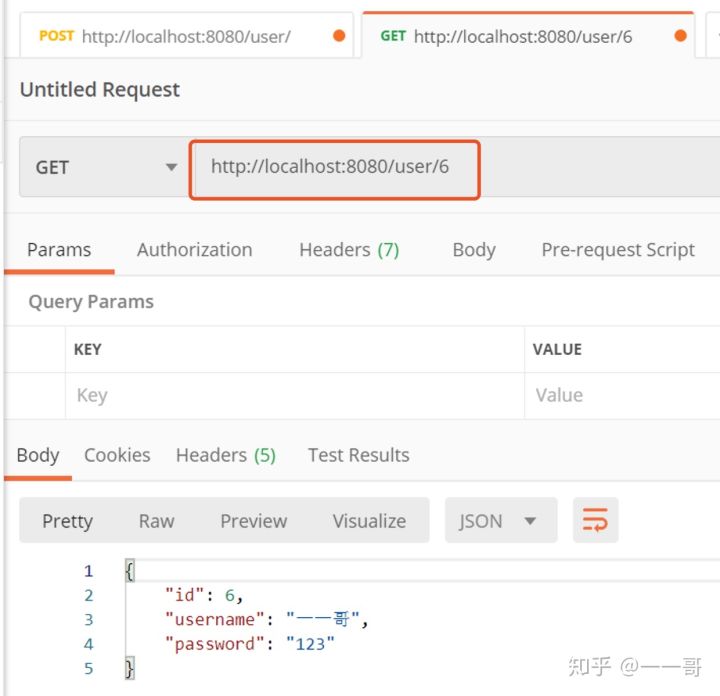
此时控制台打印的User对象的hashCode如下:

我们再多次执行查询接口,发现User对象的hashCode值不变,说明数据都是来自于缓存,而不是每次都重新查询。
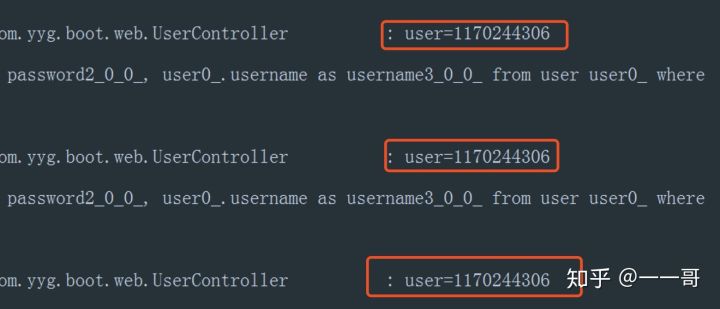
至此,我们就实现了Spring Boot中默认的缓存方案。






















 557
557











 被折叠的 条评论
为什么被折叠?
被折叠的 条评论
为什么被折叠?








